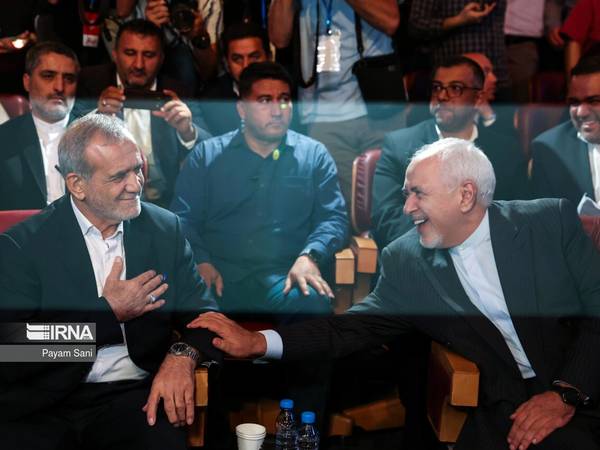Mohammad Javad Zarif, the head of the Pezeshkian administration's Strategic Council for Transition announced on Wednesday that results of consultations about the makeup of the new cabinet will be announced next week.
The council for transition formed to search and propose ministerial candidates is a new phenomenon in Iranian politics, apparently designed to show the public that President-elect Masoud Pezeshkian wants to remain true to his campaign promise of using experts to address critical issues.
At the same time, Zarif announced in a July 17 tweet on the social media platform X that committee members may not contact their nominees for the cabinet anywhere outside the committees' official meetings. If they do contact the nominees directly, that would be tantamount to the committee member's resignation.
The initial list of 16 members of the main strategic committee consists of 16 ‘reformist’ figures including Zarif himself, former Government Spokesman Ali Rabiei, Pezeshkian's campaign manager Ali Abdolalizadeh, reformist academics Hadi Khaniki and Mohsen Renani, former Minister of Economy Ali Tayyebnia, former Culture Minister Reza Salehi Amiri and former Reformist lawmakers Ali Tajernia and Ali Shakouri-Rad.
A more comprehensive list released later includes 25 members of the main committee with 3 women on board and the addition of Former ITC Minister Mohammad Javad Azari Jahromi, former Central bank Governor Abdoh Tabrizi and former presidential aide Shahindokht Molaverdi among others.
The committee members will lead their own subcommittees to determine various ministers. Each subcommittee, comprising up to 25 members, is tasked with nominating between 3 to 5 potential cabinet ministers. In total, hundreds of individuals will be involved in selecting candidates. Nonetheless, Pezeshkian’s aides have been criticized for including a very limited number of women in these committees. There is only one woman, a librarian, in the main committee. Another criticism is that nearly all of the members of all committees and subcommittees come from the reformist camp.
According to Zarif's tweet, if any committee or subcommittee member is nominated for a ministerial post, should immediately step down as member and should be immediately replaced by a new member.
The nominees will be introduced to Pezeshkian, who will make the final choice for his cabinet ministers. However, there are many exceptions to these rules. For instance, traditionally up to six of the cabinet ministers are directly appointed by Supreme Leader Ali Khamenei, although this is not stipulated by law. These ministers include those of Defense, Intelligence, Interior, Culture, Oil, and Foreign Affairs.
However, according to Iranian Constitutional Law, the President is responsible for appointing all 19 cabinet ministers and several vice presidents. However, political observers, including Iran analyst Mehdi Khalaji, note that only President Akbar Rafsanjani was able to independently appoint all his cabinet ministers during his first term in office.
Regardless of how many ministers are directly chosen by Khamenei, the President gives the full list to him for his review before giving the names to the parliament (Majles) for its vote of confidence to the ministers.
According to the main function of the committees is to convince the majority who did not take part in the elections that the ministers will be chosen in a more or less democratic process and although the President represents a small number of eligible voters, his cabinet will be more representative. Khalaji however added that even many reformists are not represented in the committees. Those who are, are exactly the same groups that supported Pezeshkian in the election.
Meanwhile, reformist cleric Rahmatollah Bigdeli who is close to Pezeshkian has said that no committee member should be nominated for any post in the government to avoid conflict of interest.
